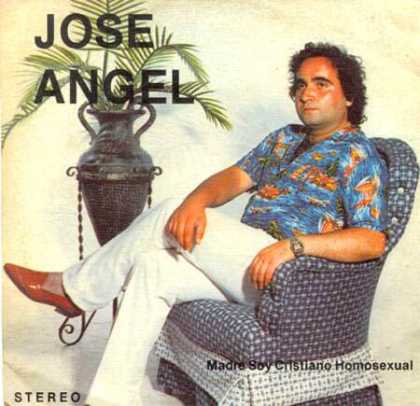SWAG has by now been so overused that no one, not even the generation that wear their hats sideways and wear their pants so that half their ass shows, seem to know what it means anymore.
Sure, you could come across a blog that has some kind of definition fo SWAG, but if it is from a blog appealing to today’s teens, I can guarantee you that 10 websites will garner 10 different and conflicting definitions. Quite often, if the website, such as a blog, has a message to say, then they often must take the trouble to inform you of which definition of SWAG they are referring to. The Urban Dictionary has over a hundred of definitions for SWAG (I gave up counting after the 20th page of definitions). Some of them seemed to get it right when they note that it is the most overused expression since the major media accused Pol Pot of being “Communist” (he was many awful things, but never a communist). And “overused” has a way of soon becoming synonymous with “meaningless”.

In my day, which wasn’t yesterday, I confess, we had something called a “generation gap”, where parents often complained that they couldn’t understand us, but knew that we young ‘uns understood each other. That is, we may have invented some words to express everyday emotions in a way that seem to give an impression that we were the first generation that ever felt them, but at least teens could talk to other teens.
But what does it mean when “your SWAG is not up to my level?”, or “Mark and I are SWAG?” It might be letters that stand for something like “secretly we are gay”, or “style without admitting greatness”, or “stolen without a gun”, or “stuff we ain’t got”, “scientific wild-ass guess”, “something we all get tired of hearing”, “sexy with a bit of gangsta”, or … well, after 30 pages of SWAG, I can only conclude no one knows what they are saying to each other anymore. The young generation has reduced the dignity of adolescence to incoherent baby-talk.
I am genuinely worried about this since I feel that young people are losing the ability to communicate with each other. A lack of definition means that SWAG is a marketable word in advertising. SWAG means whatever you want it to mean, and so if you want to buy clothes that are “Simply SWAG”, or rings that are SWAG, then your only admission into this exclusive club of users of the word SWAG is to have heard the word previously. People who can’t express their wants or needs properly are also likely not to be able to think too critically — an ideal target market for salespeople. A mere generational gap has now become a huge interpersonal gap where the young have lost the ability to express their feelings, emotions, and opinions to each other. Relationships have become shallow, even by 1970s and 1980s standards, when many older people of that generation lamented that us young folk lost touch with seeking out fulfilling relationships, and afraid to be in touch with each other.

It was not too long ago that SWAG was a word used at conventions and meant “Stuff we all get”, like T-shirts, pens, note pads, and so on. These things were often handed out at convention booths by vendors advertising their businesses to attendees.
When you brought your SWAG home from the convention, you had their names, their logos, their addresses and phone numbers, so that should you need their services, you knew who to contact.

Views: 156





 I’m sorry…. I can’t look at this cover without laughing. I am sure Alix won’t appreciate it. This is Alix Dobkin and her 1975 album “Living With Lesbians”, featuring the Lesbian Power Authority. It is likely the musical answer to the following old joke:
I’m sorry…. I can’t look at this cover without laughing. I am sure Alix won’t appreciate it. This is Alix Dobkin and her 1975 album “Living With Lesbians”, featuring the Lesbian Power Authority. It is likely the musical answer to the following old joke: This 1977 anthology of lesbian songs and poems, is called “Lesbian Concentrate: A Lesbianthology of Songs and Poems.”. I remember seeing this “orange” theme on another gay/les album cover, and recall that this was a reaction against Anita Bryant’s anti-homosexual campaign she was waging, shortly after she was the spokesperson for Florida oranges.
This 1977 anthology of lesbian songs and poems, is called “Lesbian Concentrate: A Lesbianthology of Songs and Poems.”. I remember seeing this “orange” theme on another gay/les album cover, and recall that this was a reaction against Anita Bryant’s anti-homosexual campaign she was waging, shortly after she was the spokesperson for Florida oranges.

 This album was only released in England in 1976, by a Pop/Country musician from Missouri named Jimmy Payne.
This album was only released in England in 1976, by a Pop/Country musician from Missouri named Jimmy Payne. This is the kind of needle used to deliver strong anaesthetic, although I’ve seen something like this used to inject basting juice into the meat of turkeys as they cook.
This is the kind of needle used to deliver strong anaesthetic, although I’ve seen something like this used to inject basting juice into the meat of turkeys as they cook. Somethin’ Smith and The Redheads were a vocal group that had their heyday in the 1950s with the song “It’s a Sin To Tell a Lie” (#7 on Billboard), off the album “Crazy People”.
Somethin’ Smith and The Redheads were a vocal group that had their heyday in the 1950s with the song “It’s a Sin To Tell a Lie” (#7 on Billboard), off the album “Crazy People”.